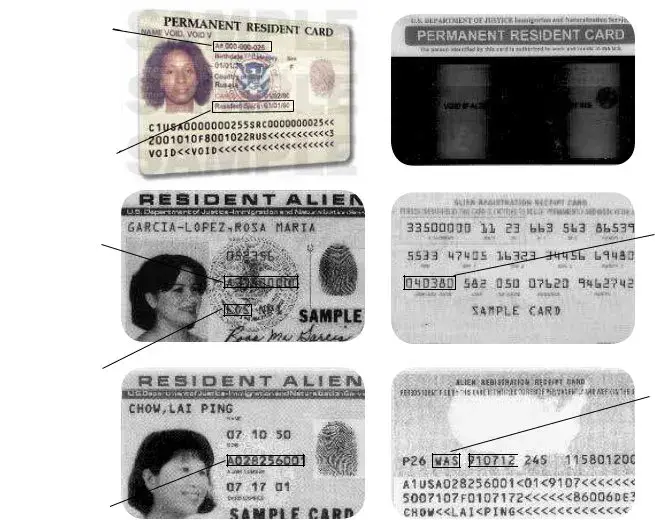Naturalization represents a significant and life-changing step for immigrants in the United States, marking their voluntary decision to become U.S. citizens. It signifies not just a formal commitment to the United States, its Constitution, and its laws, but also an embrace of the responsibilities and rights that come with American citizenship. This path to citizenship, paved with both privileges and obligations, underscores the profound bond between the individual and the nation. The USCIS M-476 form, titled "A Guide to Naturalization," serves as a comprehensive resource for those embarking on this journey. Designed by the U.S. Citizenship and Immigration Services (USCIS), the guide aims to provide clear and consistent information to assist individuals, primarily those 18 years and older, in navigating the naturalization process. It encompasses a wide array of topics including the benefits and responsibilities of citizenship, eligibility criteria, the application process, and what applicants can expect from USCIS customer service. The guide emphasizes the importance of understanding one's eligibility before applying, outlining specific requirements related to residency, physical presence, moral character, attachment to the Constitution, and knowledge of English and civics. Through this detailed manual, USCIS seeks to support applicants in preparing effectively for naturalization, offering insights into preparing for the application, getting fingerprinted, the interview process, and ultimately, taking the Oath of Allegiance. It embodies the United States' motto, E Pluribus Unum - Out of Many, One - reflecting the nation's history as a melting pot of cultures and the continued strength derived from its citizens.
| Question | Answer |
|---|---|
| Form Name | Uscis Form M 476 |
| Form Length | 58 pages |
| Fillable? | No |
| Fillable fields | 0 |
| Avg. time to fill out | 14 min 30 sec |
| Other names | form m 476, m476, uscis form m 476 guide to naturalization, m 476 guide to naturalization |

A GUIDE TO
NATURALIZATION

Table of Contents
Welcome |
Page 1 |
What Are the Beneits and Responsibilities of |
Page 3 |
Citizenship? |
|
Frequently Asked Questions |
Page 5 |
Who Is Eligible for Naturalization? |
Page 17 |
Table of Eligibility Requirements |
Page 18 |
Time as a Permanent Resident |
Page 22 |
Continuous Residence |
Page 22 |
Physical Presence in the United States |
Page 23 |
Time as a Resident in a USCIS District or State |
Page 24 |
Good Moral Character |
Page 25 |
English and Civics |
Page 26 |
Attachment to the Constitution |
Page 28 |
What Should I Expect From the Naturalization |
Page 31 |
Process? |
|
Preparing to Apply |
Page 32 |
Completing Your Application and Getting Photographed |
Page 33 |
Getting Fingerprinted |
Page 35 |
Being Interviewed |
Page 36 |
Taking the Oath |
Page 38 |
What Kind of Customer Service Can I Expect? |
Page 41 |
Where Do I Go for Help? |
Page 43 |
Glossary of Terms |
Page 45 |
1
2
3
4
5
6
7
8
A Guide to Naturalization |
i |
|
|

This page is intentionally left blank.
ii

Welcome1
E Pluribus Unum - Out of Many, One
Welcome
We are very pleased that you want to become a U.S. citizen. The United States is a nation of immigrants. Throughout our history, immigrants have come here seeking a better way of life and have strengthened our Nation in the process.
For more than 200 years, the United States has remained strong because of our citizens and the common civic values we share. Deciding to become a U.S. citizen is one of the most important decisions in a person’s life. If you decide to apply for naturalization, you will be showing your permanent commitment to the United States. You will also be showing your loyalty to its Constitution and its people.
When you are naturalized, you agree to accept all of the responsibilities of being a citizen. You agree to support the United States, its Constitution, and its laws. In return, you are rewarded with all the rights and privileges that are part of citizenship. We welcome your interest and hope you will read on to learn more about naturalization.
What Is Naturalization?
Naturalization is commonly referred to as the manner in which a person not born in the United States voluntarily becomes a U.S. citizen.
What Is This Guide for?
U.S. Citizenship and Immigration Services (USCIS) created this Guide to provide better and more consistent information to people interested in naturalization. It is written mainly for people 18 years or older who want to become citizens. Please take the time to review this information to make sure that you are eligible to apply
for naturalization. You can find more information at www.uscis.gov or by calling Customer Service at
A Guide to Naturalization |
1 |
|
|
This page is intentionally left blank.

WhatAre the Benefits and Responsibilities of Citizenship?
Benefits
The Constitution and laws of the United States give many rights to both citizens and
•Voting. Only U.S. citizens can vote in Federal elections. Most States also restrict the right to vote, in most elections, to U.S. citizens.
•Bringing family members to the United States. Citizens generally get priority when petitioning to bring family members permanently to this country.
•Obtaining citizenship for children born abroad. In most cases, a child born abroad to a U.S. citizen is automatically a U.S. citizen.
•Traveling with a U.S. passport.
A U.S. passport allows you to get assistance from the U.S. government when overseas.
•Becoming eligible for Federal jobs.
Most jobs with government agencies require U.S. citizenship.
•Becoming an elected official. Many elected offices in this country require U.S. citizenship.
•Showing your patriotism. In addition, becoming a U.S. citizen is a way to demonstrate your commitment to your new country.
The above list does not include all the benefits of citizenship, only some of the more important ones.
Responsibilities
To become a U.S. citizen you must take the Oath of Allegiance. The oath includes several promises you make when
you become a U.S. citizen, including2 promises to:
•Give up all prior allegiance to any other nation or sovereignty;
•Swear allegiance to the United States;
•Support and defend the Constitution and the laws of the United States; and
•Serve the country when required.
U.S. citizens have many responsibilities other than the ones mentioned in the Oath. Citizens have a responsibility to participate in the political
process by registering and voting in elections. Serving on a jury is another responsibility of citizenship. Finally, America becomes stronger when all of its citizens respect the different opinions, cultures, ethnic groups, and religions found in this country. Tolerance for differences is also a responsibility of citizenship.
When you decide to become a U.S. citizen, you should be willing to fulfill the responsibilities of citizenship. We hope you will honor and respect the freedoms and opportunities citizenship gives you. At the same time, we hope you become an active member of your community. It is by participating in your community that you truly become
an American.
A Guide to Naturalization |
3 |
|
|
This page is intentionally left blank.

Frequently Asked Questions
Q1. How can I become a U.S. citizen?
AYou may become a U.S. citizen (1) by birth or (2) through naturalization.
Q2. Who is born a U.S. citizen?
A Generally, people are born U.S. citizens if they are born in the United States or if they are born to U.S. citizens:
(1) If you were born in the United States:
3
Normally you were a U.S. citizen at birth.1 (Including, in most cases, the Commonwealth of Puerto Rico, the territories of Guam and the U.S. Virgin Islands, and after November 4, 1986, the Commonwealth of the Northern Mariana Islands),
(2) If you were born abroad to TWO U.S. citizens:
And at least one of your parents lived in the United States at some point in his or her life, then in most cases you are a U.S. citizen.
(3) If you were born abroad to ONE U.S. citizen:
In most cases, you are a U.S. citizen if all of the following are true:
• One of your parents was a U.S. citizen when you were born;
• Your citizen parent lived at least 5 years in the United States before you were born; and
• At least 2 of those 5 years in the United States were after your citizen parent’s 14th birthday.2
Your record of birth abroad, if registered with a U.S. consulate or embassy, is proof of your citizenship. You may also apply for a passport to have your citizenship recognized. If you need additional proof of your citizenship, you may file an “Application for Certificate of Citizenship” (Form
Certificate of Citizenship. Call the USCIS Forms Line at
1The exception is persons who were born not subject to the jurisdiction of the United States, such as children of foreign diplomats.
2If you were born before November 14, 1986, you are a citizen if your U.S. citizen parent lived in the United States for at least 10 years and 5 of those years in the United States were after your citizen parent’s 14th birthday.
A Guide to Naturalization |
5 |
|
|

Q A
3. How do I become a naturalized citizen?
If you are not a U.S. citizen by birth or did not acquire/derive U.S. citizenship automatically after birth, you may still be eligible to become a citizen through the naturalization process. Eligible persons use the “Application for Naturalization” (Form
Persons who acquired citizenship from parent(s) while under 18 years of age use the “Application for Certificate of Citizenship” (Form
document their naturalization. You may call the USCIS Forms Line at
Q A
4. What are the requirements for naturalization?
Please see Section 4, “Who Is Eligible For Naturalization?,” beginning on page 17 for more details on the eligibility requirements for naturalization. You should also complete the Eligibility Worksheet in the back of this Guide to help you find out if you meet the eligibility requirements.
6

Q
A
5. When does my time as a Permanent Resident begin?
Your time as a Permanent Resident begins on the date you were granted permanent resident status. This date is on your Permanent Resident Card (formerly known as an Alien Registration Card or “Green Card”). The sample cards on this page show where you can find important information such as the date your Permanent Residence began.
Date you became a Permanent Resident
(January 1, 1980)
Front
Back
This card does not have Port-
Date you became a Permanent Resident
(April 3, 1980)
 Date you became a Permanent Resident
Date you became a Permanent Resident
(July 12, 1991)
NOTE: The
|
|
|
A Guide to Naturalization |
7 |
|
|
|
|
